Instructions for Side by Side Printing
- Print the notecards
- Fold each page in half along the solid vertical line
- Cut out the notecards by cutting along each horizontal dotted line
- Optional: Glue, tape or staple the ends of each notecard together
STAAR Biology 2019
front 1 A new predator of rabbits has been introduced within an ecosystem.
This new predator runs faster than the native predators of
rabbits. | back 1 D |
front 2 Which answer choice best describes a community? | back 2 H |
front 3 Eight components present in nucleic acids are listed in the
box. | back 3 B |
front 4 What would be the most likely effect of a wildfire that burned a
large area of a forest? | back 4 H |
front 5 Which four body systems interact to allow a person to sneeze? | back 5 A |
front 6 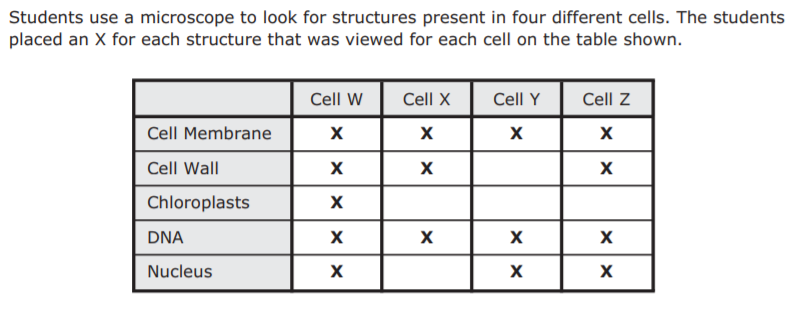 Which cell that was viewed is most likely a prokaryote? | back 6 G |
front 7 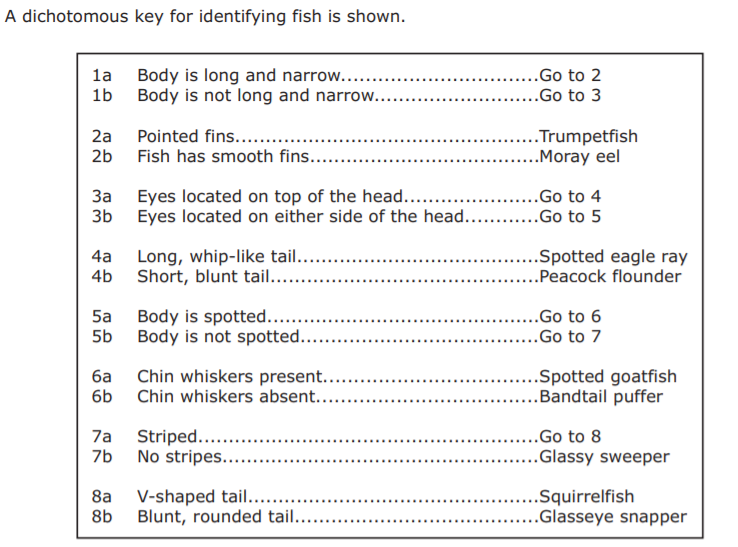 Based on this key, which two fish have eyes located on either side of
their head and are not spotted? | back 7 A |
front 8 Students are modeling mRNA during the process of protein synthesis.
Which answer choice correctly describes the model of the mRNA strand
being transcribed? | back 8 G |
front 9 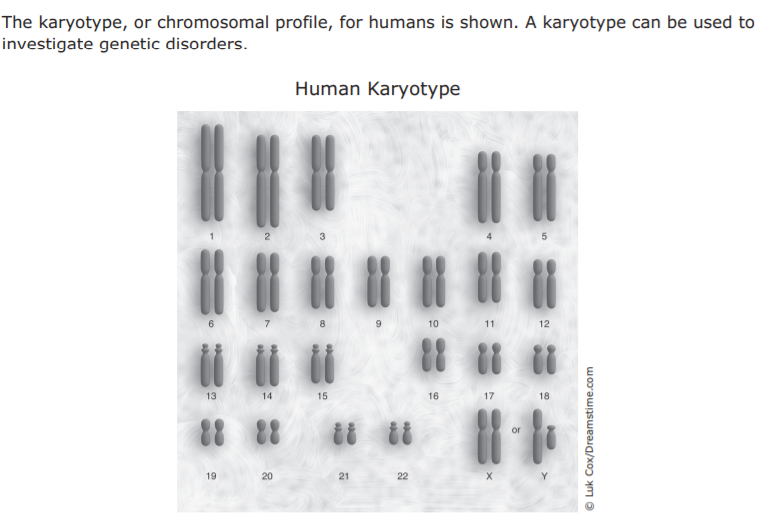 The chemical colchicine is used in the production of karyotypes. Colchicine prevents spindle fibers from forming during the cell cycle. What is a result of preventing spindle fibers from forming? | back 9 C |
front 10 A team of students encounters an unknown organism in a field while
conducting a biodiversity study. Some students think the organism is a
plant, while others think it is a fungus. Which question should the
students investigate to classify the organism correctly? | back 10 G |
front 11 The San Marcos salamander, Eurycea nana, is a light reddish-brown
translucent salamander about 2–5 cm in length. E. nana is found only
in Spring Lake and a portion of the San Marcos River. | back 11 A |
front 12 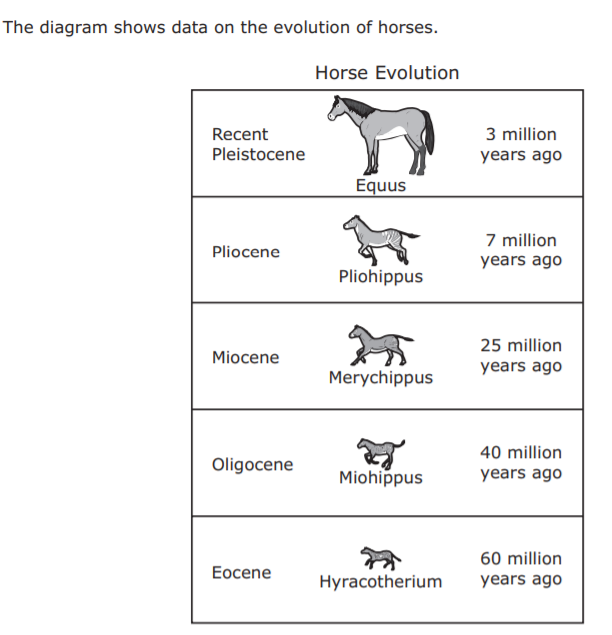 The data in the diagram is evidence that — | back 12 G |
front 13 Which of these describes the similar functions of capsids and nuclear
membranes? | back 13 C |
front 14 Enzymes are proteins that have a three-dimensional shape that is
specific to a particular substrate. Environmental conditions can
change the shape of the protein. | back 14 G |
front 15 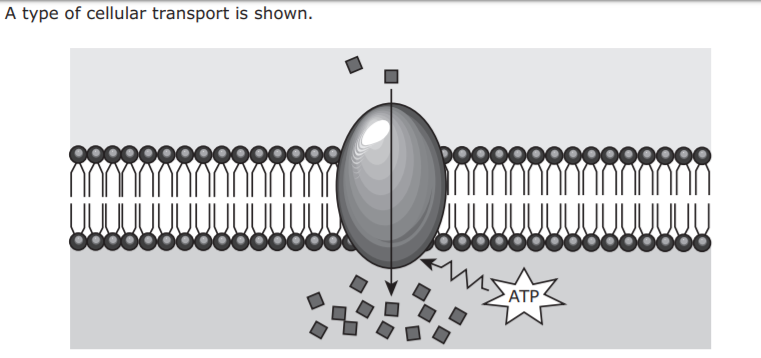 Which description best identifies this type of cellular
transport? | back 15 A |
front 16 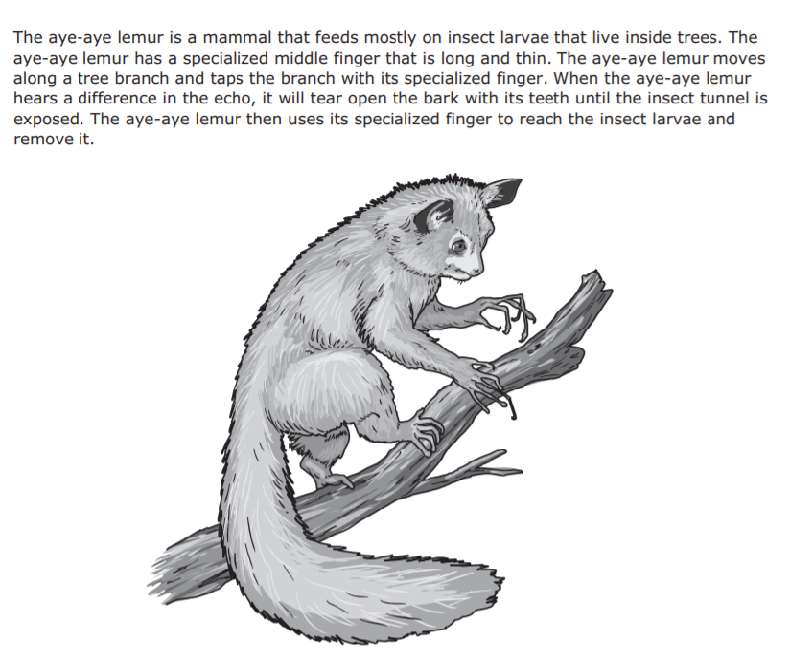 Which selective pressure most likely resulted in the development of
the aye-aye lemur’s special adaptation? | back 16 J |
front 17 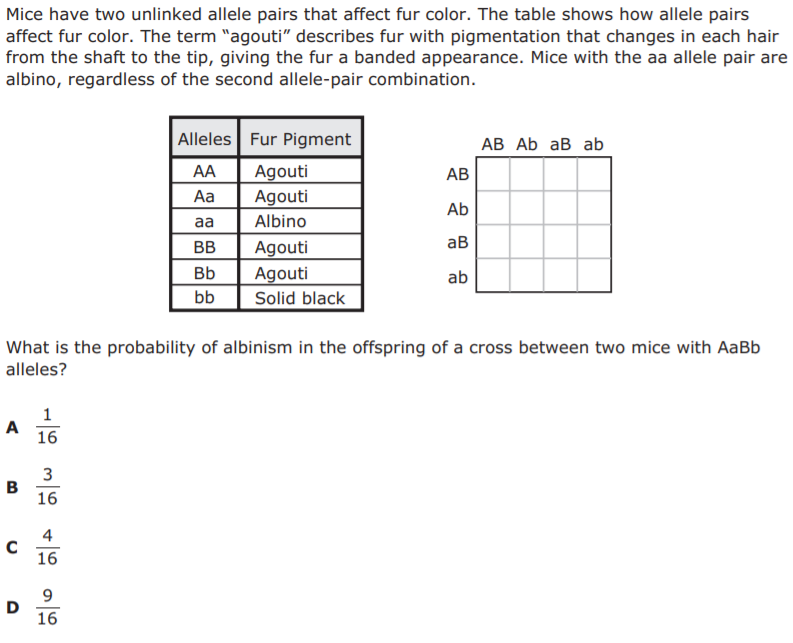 | back 17 C |
front 18 Gibberellins are hormones produced in the root tips of plants. The
plant uses these hormones to stimulate the growth of shoots. | back 18 G |
front 19 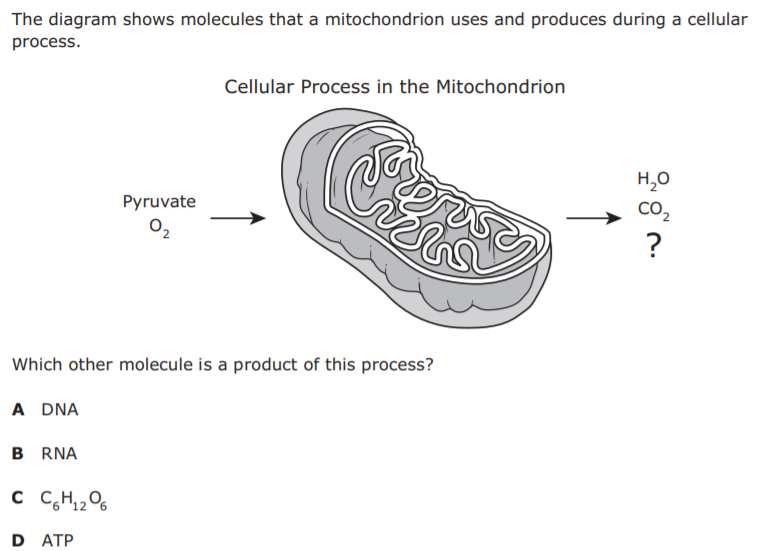 | back 19 D |
front 20 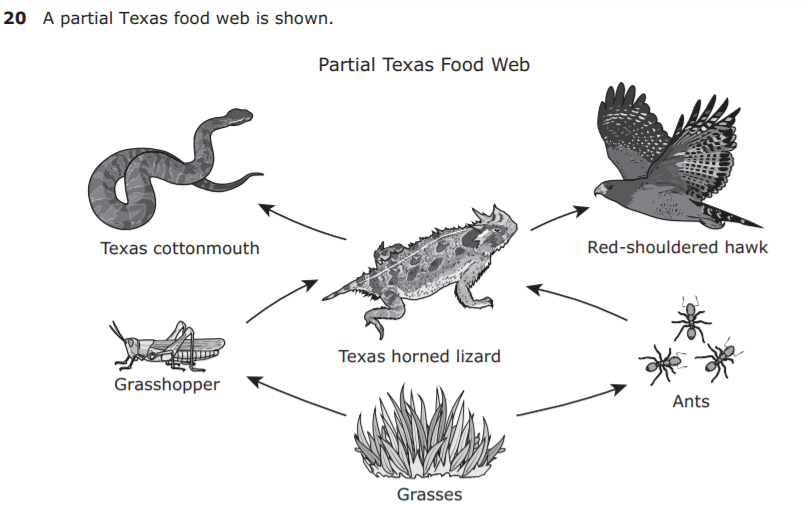 The populations of which organisms will most likely increase as a
result of a disease that suddenly reduced the population of Texas
horned lizards? | back 20 G |
front 21  Which statement provides the best explanation for the difference in
biomass of organisms found at each trophic level? | back 21 A |
front 22 Conservation biologists studying cheetah populations have determined
that the lack of genetic diversity among the cheetahs is due to
genetic drift. | back 22 H |
front 23 CRISPR-Cas9 is a genetic modification technique that edits parts of
the genome of an organism. Using this technique scientists can add,
remove, or modify sections of the DNA sequence. | back 23 A |
front 24 During secondary succession, which of these best describes why
decomposing pioneer plants give way to larger, more complex plants
species, such as hardwood trees? | back 24 J |
front 25 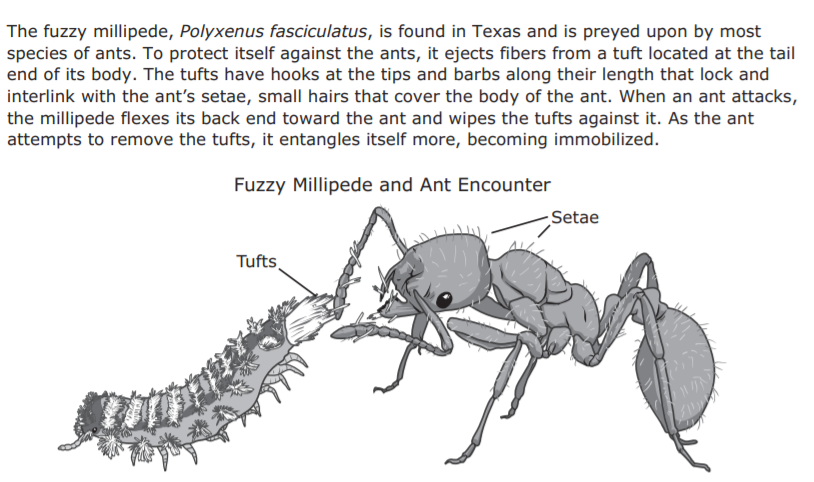 Which two systems most directly interact in the fuzzy millipede’s
defense against ants? | back 25 A |
front 26 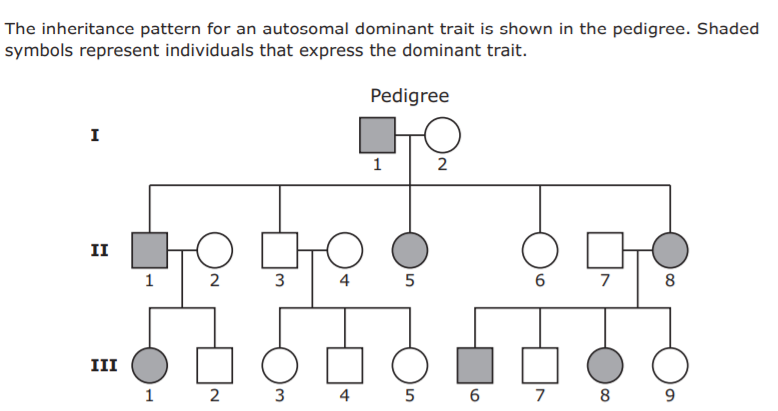 Based on this pedigree, what are the most likely genotypes of
individuals I-1 and I-2? G :(I-1: AA, I-2: Aa) | back 26 H |
front 27 When cells lose their ability to regulate the cell cycle, they can
divide at an accelerated rate and form a mass of cells. This mass of
cells is referred to as — | back 27 A |
front 28  Which type of mutation does the model demonstrate? | back 28 G |
front 29 Many tree frog populations are threatened due to habitat loss. In an
effort to promote conservation, tree frogs may be bred in captivity. A
zoo acquired male and female tree frogs from two different
populations. In the zoo, the tree frogs were able to successfully mate
within their own population, but breeding attempts between the two
populations were unsuccessful. | back 29 D |
front 30 In a study of physical endurance, researchers observed significant
increases in the heart rates and breathing rates of participants
immediately after they engaged in strenuous exercise. | back 30 G |
front 31 In 1898 Friedrich Loeffler and Paul Frosch found evidence that the
cause of the highly contagious hoof-and-mouth disease in livestock was
a microscopic infectious particle. It was discovered that this
particle requires a host cell to reproduce. | back 31 D |
front 32 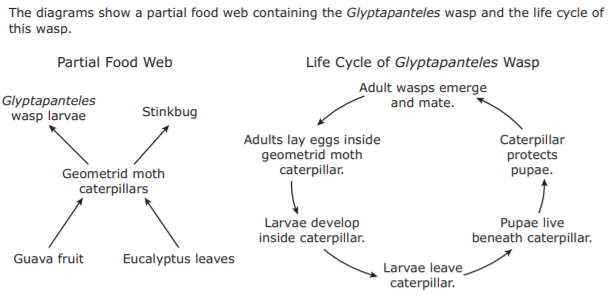 Based on the two diagrams, which list correctly identifies the
relationships Glyptapanteles | back 32 F |
front 33 Male guppies found in areas without predators are more colorful than
the ones found in locations with large predator populations. A
population of adult guppies originating from an area with a large
number of predators is transferred to a nearby area with few
predators. | back 33 D |
front 34 Grassland ecosystems in Texas have evolved to depend on periodic
fires to return nutrients to the soil and encourage plant
reproduction. Humans have prevented fires in many of these grassland
areas, resulting in plant and animal communities with little
diversity. Wildlife biologists often recommend purposefully starting
fires called prescribed burns, which are monitored and controlled, in
grassland ecosystems every 3 to 4 years. These biologists observe
greater diversity in plant and animal life in the years following a
prescribed burn. | back 34 G |
front 35 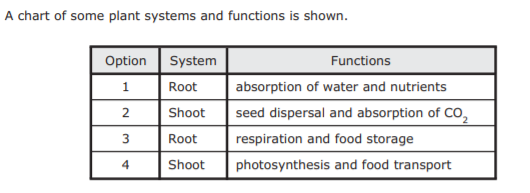 Which system interactions are dependent on the plant’s ability to
respond to the direction of light? | back 35 D |
front 36 Exposure to the building material asbestos has been linked to certain
types of cancers. Asbestos causes mutations in the p53 gene, which
controls tumor suppression. Which statement best explains why people
with cancer due to asbestos exposure do not pass the mutation on to
their offspring? | back 36 G |
front 37 Which of these components are found in the cells of all living
organisms? | back 37 C |
front 38 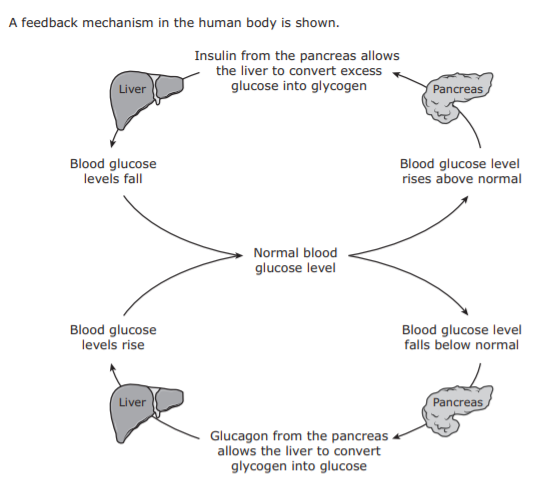 Based on this diagram, which two systems interact to maintain
homeostasis? | back 38 G |
front 39 Which role of protists has the most positive effect on maintaining
the plant population in an ecosystem? | back 39 C |
front 40 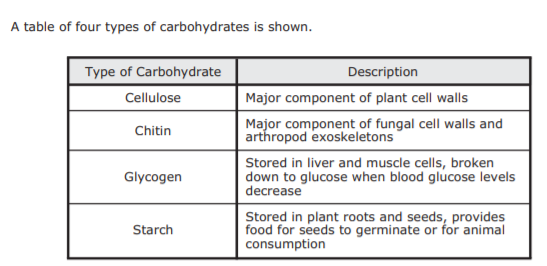 Which list correctly matches the functions to the types of
carbohydrates? | back 40 F |
front 41 Gametes produced by an organism contain a combination of genes from
that organism. In every gamete, this combination is — | back 41 D |
front 42 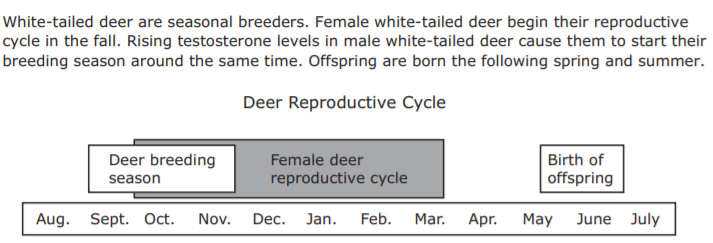 What is the most likely explanation for white-tailed deer having a
seasonal breeding cycle instead of a monthly breeding cycle like many
domesticated animals? | back 42 H |
front 43  Which of these is the correct complementary DNA strand for the
segment shown? | back 43 D |
front 44 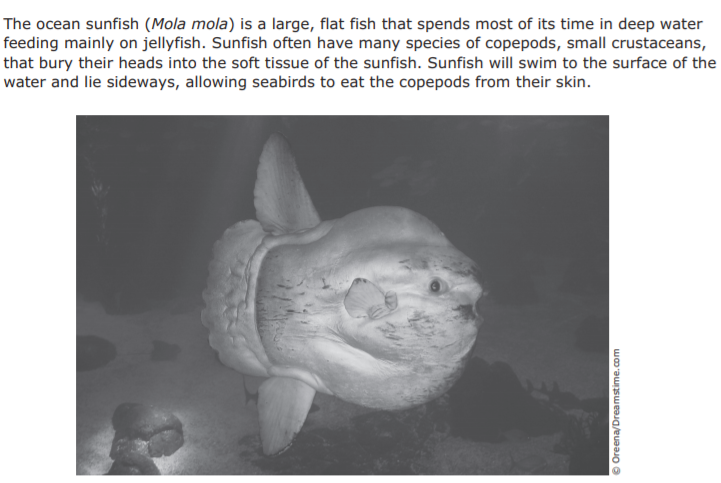 Which list describes the types of relationships the sunfish has with
other marine organisms? | back 44 F |
front 45 Which statement accurately describes the energy needs for
photosynthesis and cellular respiration? | back 45 D |
front 46 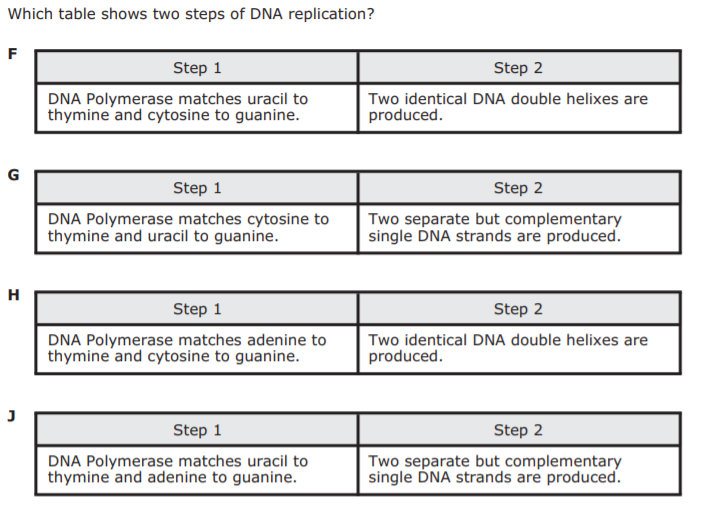 | back 46 H |
front 47 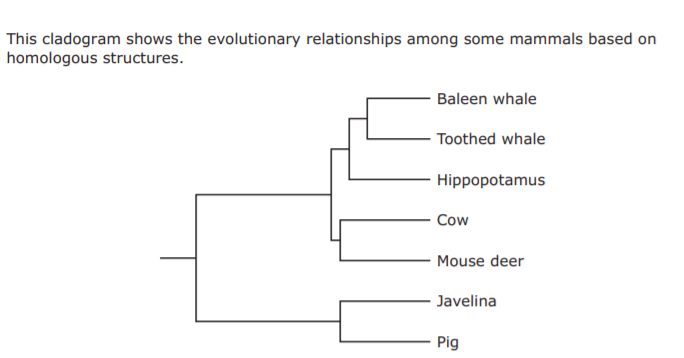 Which statement is supported by this cladogram? | back 47 A |
front 48 Some species of millipedes will roll into a ball when threatened,
while other species of millipedes can secrete noxious chemicals from
their bodies. | back 48 G |
front 49 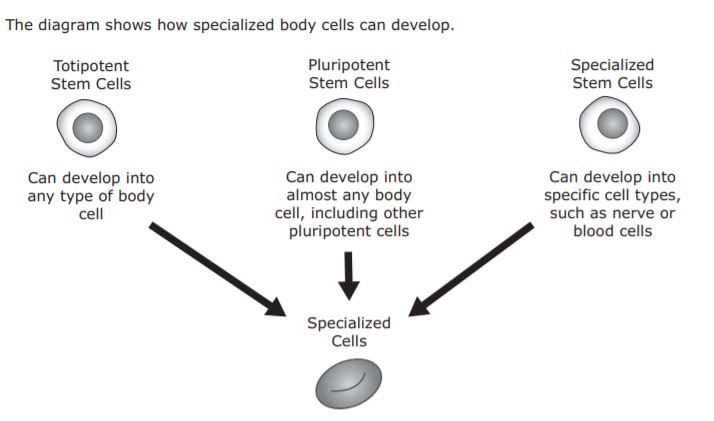 Which of the following best explains why cells that contain the same
genetic material do not develop into the same types of cells? | back 49 A |
front 50 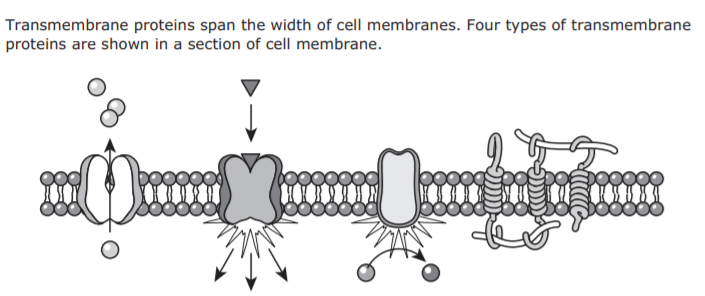 Although these proteins have different specific functions, they all
— | back 50 H |